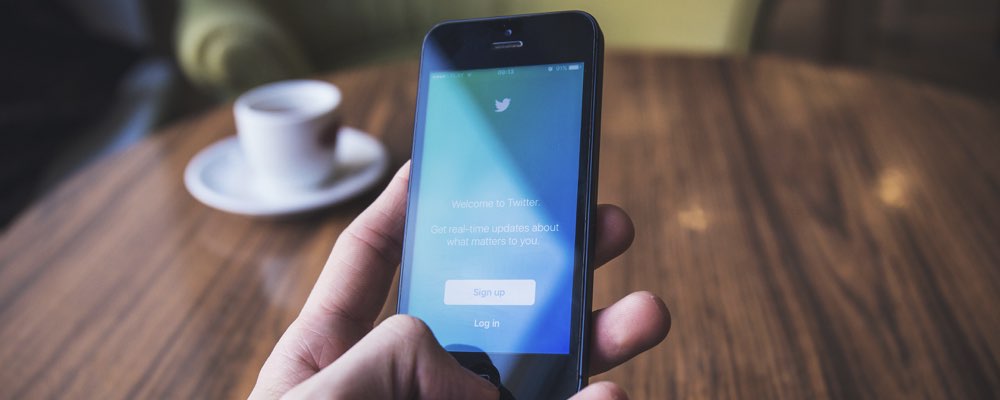With questionable financials and poor user growth, does this spell the end of the tweet as we know it?
Apparently, Twitter is dead. If not dead, then dying. Twitter has 320 million active monthly users which is about half as many as Instagram. Facebook has 6 times that. Snapchat is fast catching up. It hasn’t really grown in users since 2015. Despite making $2.5bn dollars revenue last year, they made a loss of $456m. Indeed, the company has never made a profit… Was Vine (Twitter owned and shut down at the start of the year) a sign of things to come?
According to the company, what they are succeeding at, is engagement. As they state in their letter to investors, “We saw continued, strong double-digit engagement growth on a year-over-year basis across Tweet impressions and time spent on Twitter in the fourth quarter and we expect this momentum to continue.” But what does this mean for the company in terms of the platforms direction and what might that spell for influencer marketing in the future?
What’s happening on social media?
Social media channels are used in different ways by different users, but let’s generalise and take those that are talked about now as the main players when it comes to content distribution. What are they being used for? Your content might be distributed on these platforms to reach the following:
- Facebook – your friends, family, a feed of opinion and events.
- Instagram – see and be seen by the world, a utopia of life.
- Snapchat – with anyone for all of 10 seconds.
- Twitter – to start a conversation, for news and updates.
Let’s expand with a social media scenario: a delayed flight. What else are you going to do during a flight delay other than check your phone?
- Facebook – you ask your friends if they’ve ever had terrible service from the airline and 20 people will give you an affirmative. This makes you feel better about complaining, but ultimately futile.
- Instagram – you find the airline in question, their beautiful air hostesses, exotic locations and latest offers. Cool, but no answers.
- Snapchat – you become pre-occupied by finding the appropriate filter for the country you are in…
- Twitter – you get directed to a customer services channel having tweeted your frustration, get directed to DM and have a conversation about why your flight was delayed and what to do next. Bingo.
The Honest Play
Is this what Twitter has always been good at? In short: instant news, real talk, dialogue, fast, real, public. In the above scenario Twitter succeeds thanks to engagement. This will be a recurring them throughout the course of this article. What’s better. A like or a conversation? And is this why Twitter is becoming (more) relevant now? Twitter is increasingly becoming an honest medium. It is direct and people can be called out. It remains a public forum. There is a trust element, and what you are tweeting can be engaged with in real time. It comes down to relevancy. What can be more relevant than, ‘this just happened.’
What Twitter does is deliver immediate response or immediate content, it is live. And in that sense, honest. People log on to Twitter to see what’s happening and get reaction and resolution. This makes it authentic and, as per our earlier example, that doesn’t happen all the time on other social channels.
Brands & Influencer Marketing
When we talk about influencer marketing we often talk about, pier to pier recommendation. As previously suggested, engagement of community might be one of the most important metrics a brand can measure acquisition by. When someone takes the time to engage in discussion, this opens a window of opportunity, to talk about a USP. This is a very different experience to the act of clicking. Basically, the more authentic the content, the greater the likelihood of conversation, the greater the chance of acquisition and conversion. Crude sales talk there, but you get the message.
Brands who are committed to working with communities and encouraging them to be advocates, will look to start celebrating their fans more – be that directly or via influencers. Twitter is an easy to use and authentic tool for direct engagement; because there isn’t as much of a focus on paid curation.
What we’ll term ‘paid organic’ (content posts on social that are increasingly identifiable as sponsored) may signal the death of genuine content unless they are crafted intelligibly. Several social media channels are becoming aggregators of this content, and this focus on revenue growth may be to the detriment of user experience.
What next for Twitter?
Perhaps it’s not about how many people use Twitter, it’s about who uses Twitter. It has become a niche service for specific user. If you are a content creator or publisher, a business or public figure, there are many ways Twitter will continue to work for you and help you distribute your content authentically. Twitter might not have to do anything other than make the experience the best it can be for these users and enhance that offering.
In part, Twitter’s influence is growing as other social channels are in some cases introducing increasingly intrusive advertising tactics to monetise. Of its own doing or not, Twitter however still feels like an organic experience. Twitter remains focussed on being what all of these platforms set out to be in the first place. Social. And by being social, accessible, and by being accessible, authentic and relevant. From a purely business perspective, Twitter might be in hot water. But whilst other social channels focus on user acquisition and share price, Twitter, passively or otherwise, remains an effective channel to distribute content and actively engage your audience.
What do you think? What has your experience been using Twitter, be that as a brand, an influencer or simply a user? Let us know!


Leave a Comment